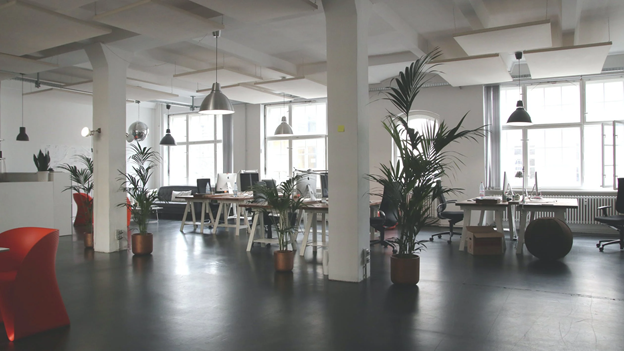Table of Contents
Sitting is the new smoking.
It may sound like an exaggeration. But it isn’t. Studies show that sitting for long periods of time can negatively affect health (including an increased risk of cardiovascular disease and diabetes).
This is just one of the reasons why an ergonomic office environment is essential for both businesses and employees.
Now, the benefits of ergonomic offices for employees are numerous.
But organisations often see it as just being forced to get cushy chairs for their employees.
Studies, however, suggest that the benefits for business are also huge.
- 75% reduction in absenteeism
- 56% reduction in error rates
- 15% increase in productivity
- 50% reduction in workers’ compensation claims for work-related musculoskeletal disorders (MSDs)
- 80% decline in employee turnover
Not sure how all that happens with investment in ergonomic seating?
Well, then strap on your seatbelts. We’re about to explore the world of workplace ergonomics!
Benefits of Ergonomic Offices for Employees
1. Reduced risk of injury
Ergonomic design reduces physical strain, reducing the risk of workplace injuries.
2. Increased productivity
Ergonomic design improves comfort and efficiency, allowing employees to work more productively.
3. Improved posture
Ergonomic design promotes proper posture, reducing strain on the body and preventing injuries.
4. Reduced physical discomfort
Ergonomic design reduces physical discomfort and fatigue. Hence, reducing the incidence of aches and pains in the body.
5. Enhanced job satisfaction
Ergonomic design improves comfort and reduces stress. Thus, leading to higher job satisfaction and motivation.
6. Increased creativity
Ergonomic design improves comfort and reduces stress. Thus, leading to higher job satisfaction and motivation.
7. Better communication
Ergonomic design promotes a comfortable and conducive working environment. Hence, improving communication and collaboration among employees.
8. Enhanced work-life balance
Ergonomic design includes flexible and supportive furniture, equipment, and work arrangements. These contribute towards better work-life balance for employees.
9. Improved mood
Ergonomic design reduces physical discomfort and stress. Thus, improving the mood and emotional well-being of employees.
Benefits of Ergonomic Offices for Businesses
1. Reduced absenteeism
Fewer missed work days due to injuries, leading to increased productivity and profitability.
2. Increased profitability
Higher productivity leads to increased output and profitability for the organisation.
3. Reduced workers’ compensation costs
Improved posture and fewer workplace injuries lead to lower workers’ compensation costs. Thus, increased profitability.
4. Reduced healthcare costs
Fewer healthcare costs associated with treating aches and pains, lead to cost savings..
5. Improved employee retention
Higher job satisfaction and motivation lead to increased retention rates and lower turnover.
6. Improved innovation
Increased creativity and innovation in the workplace, leading to improved products and services.
7. Improved teamwork
Increased collaboration and communication among employees, leading to improved team dynamics. And higher-quality work.
8. Improved employee retention
Higher job satisfaction and motivation, leading to increased retention rates and lower turnover.
9. Improved employee engagement
Better mood and emotional well-being result in increased job satisfaction. Leading to better employee engagement.
Gearing up Towards an Ergonomic Office
The benefits of an ergonomic office space design for employees and ultimately organisations are now clear.
It’s time to get started with an office refurbishment towards an ergonomic office design.
Here’s your roadmap.

Step 1: Assess Your Workspace
- Identify issues or concerns related to ergonomics. It could be furniture/arrangements that lead to poor posture or physical discomfort.
- Measure the physical space available. ensure that it is adequate for ergonomic furniture and equipment.
Step 2: Invest in Ergonomic Furniture and Equipment
- Purchase ergonomic furniture. Invest in memory foam seats, mini desks, and corner sit/stand desks. Make sure the furniture can be adjusted to fit the individual needs of each employee.
- Invest in ergonomic equipment. Look for keyboards, mice, monitors, etc. designed to reduce strain on the body.
Step 3: Promote Proper Posture
- Encourage the use of ergonomic furniture and equipment that promotes proper alignment.
- Train employees on adequate techniques to consider such as computer screens should be at the same level as the eyes, looking down should be avoided as it will cause neck and back aches etc. Remind them to take frequent breaks to stand up, stretch, and walk to avoid prolonged sitting.
Step 4: Create a Comfortable Environment
- Ensure that the office temperature and lighting are comfortable. They should be adjustable as needed.
- Install noise-cancelling panels or white noise machines to reduce distracting background noise.
Step 5: Implement Organisational Policies
- Educate employees on ergonomics. Conduct training or workshops about the benefits of ergonomic design.
- Encourage employees to report any issues related to ergonomics.
Step 6: Monitor and Adjust
- Regularly evaluate the effectiveness of your ergonomic office design and adjust as needed.
- Monitor employee health and wellness metrics, such as absenteeism and healthcare costs. This will help assess the impact of your ergonomic design.
With that, you are all set to get started toward an ergonomic office design and reap its many advantages. Don’t wait. Start the ergonomic revolution at your organisation today.
Author Profile
- Blogger and Educator by Passion | Senior Online Media & PR Strategist at ClickDo Ltd. | Contributor to many Education, Business & Lifestyle Blogs in the United Kingdom & Germany | Summer Course Student at the London School of Journalism and Course Instructor at the SeekaHost University.
Latest entries
 BusinessDecember 2, 2025How to Build an Effective Progression Plan in Your Company
BusinessDecember 2, 2025How to Build an Effective Progression Plan in Your Company BusinessOctober 24, 2025Legionella Risk Assessment: 5 Things Every Entrepreneur Needs to Know
BusinessOctober 24, 2025Legionella Risk Assessment: 5 Things Every Entrepreneur Needs to Know EmploymentSeptember 2, 2025Why Motorbike Accident Staff Claims are a Growing Business Risk
EmploymentSeptember 2, 2025Why Motorbike Accident Staff Claims are a Growing Business Risk FinanceAugust 21, 2025A Swiss Bank Account for Foreigners: Stability, Tradition, and Options for International Clients
FinanceAugust 21, 2025A Swiss Bank Account for Foreigners: Stability, Tradition, and Options for International Clients





